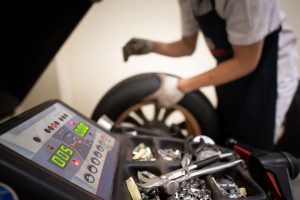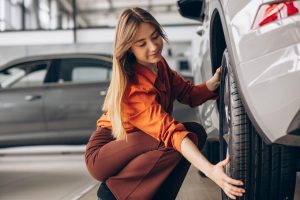Having problems with your tires is one of the common reasons why we get calls for roadside assistance. With proper maintenance however, you can avoid most tire-related inconveniences.
High on the list of most impactful is maintaining the proper tire pressure.
Reasons To Regularly Check Your Tire Pressure
The tires of a car is a very important part of the vehicle. It comes in contact with the road and if it is not in good condition, it can affect everything in the car. There are many reasons why the tire pressure should be checked or maintained and they are as follows:
Ensure Safety
Tires should be properly filed so that they can be easily controlled. Over- or underinflated tires are more difficult to handle. Underinflated tires can feel sluggish while those that are overinflated are also dangerous especially when turning at high speeds.
The tire pressure can also affect braking grip, stopping distance as well as directional stability. Both overinflated and underinflated tires will have a more difficult time on the road and this can cause them to blow out more often rather than properly inflated tires.
Save Cash
As discussed above, tires that are overinflated and underinflated are more prone to wearing out. That means you have to buy and replace them often. When tires are properly inflated and are stabilized, it’s life can extend.
Similarly, you can save on the cash that you spend on fuel when your tires are properly inflated. Underinflated tires are sluggish and may require more fuel burned per distance traveled. Simply inflating the tires can help make the car move more efficiently.
A More Comfortable Ride
When the tires are properly inflated, it is more responsive and can be better controlled by the driver. That makes it more comfortable for the driver to maneuver. Also, passengers can feel more comfortable too because turning is smoother because the driver can easily assess each turn.
Best For The Environment
Having properly filled tires is not only good for the owners but it is also good for the environment too. As mentioned, underfilled tires consume more fuel to move, that also means more carbon dioxide is released into the air. This can worsen air pollution and can contribute to global warming.
How To Check Tire Pressure
To maintain proper tire pressure, you should first know how to check the current pressure of your tires. Tire pressure must be checked regularly once a month or every two weeks. Also, make it a habit to check the tire pressure when you are taking your car for a long ride or if you are carrying a heavier load.
Here are a few tips on measuring the tire pressure of your car:
-
Cold Tires Are Best
If you are going to check the tire pressure, it would be best to do it when the tires are cold. Do it before the tires are exposed outside to the sunlight or the outside temperature. For every 10 degrees Fahrenheit increase, the pressure of the tires also increases by 1 PSI. On the contrary, during the winter, the tire pressure could drop for up to 5 PSI due to the temperature change.
-
Check The Manufacturer’s Recommended Pressure
To know the optimal tire pressure of your vehicle, make sure to check the car’s handbook. Manufacturers have recommended tire pressure for different models. Some even have different pressure recommendations for the front and rear tires.
Most manufacturers will list two recommendations, one for regular use and one for a full load. If you can’t find the car’s handbook, try looking for the recommended tire pressure on the driver’s door post or you can also contact your dealer, the manufacturer or a professional when it comes to tires.
-
Find A Reliable Tire Pressure Gauge
To make sure you take accurate measurements of the tire pressure, you must use a reliable tire pressure gauge. You can purchase one from a car parts dealer so you can use it at home. Similarly, there is also a tire pressure gauge at gas stations.
Modern gauges are now battery-operated and they show digital readings. The traditional ones are the stick type gauges.
To check the tire pressure, the cap on the air valve found on the tire is removed. This reveals the valve stem where the gauge is attached. The gauge is quickly pressed on it and you’d know you’ve pushed enough when the hissing sound stops. Now you can read the pressure shown on the gauge.
-
Use An Air Compressor To Add Pressure
With the reading shown on the gauge, you can now adjust the pressure. If the pressure is above the recommended pressure, then you have to let some air out to lower the pressure. To do this, you just push the valve then check again with the gauge.
If the pressure of the tire is too low, it can be filled by using an air compressor. You can purchase your air compressor or you can just use the one found at the gas station. Once the correct pressure is reached, simply reattach the valve cap.



